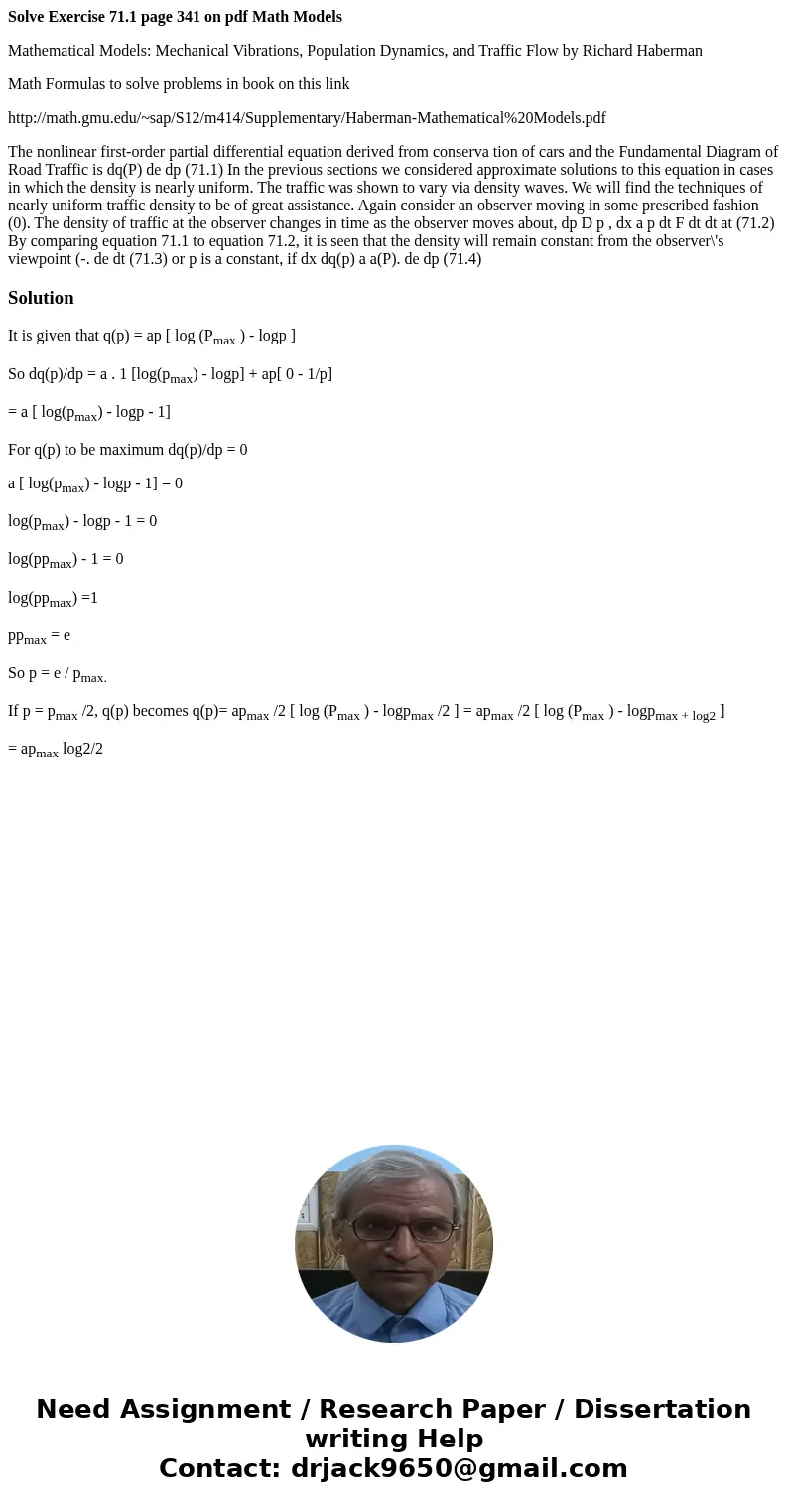Solve Exercise 711 page 341 on pdf Math Models Mathematical
Solve Exercise 71.1 page 341 on pdf Math Models
Mathematical Models: Mechanical Vibrations, Population Dynamics, and Traffic Flow by Richard Haberman
Math Formulas to solve problems in book on this link
http://math.gmu.edu/~sap/S12/m414/Supplementary/Haberman-Mathematical%20Models.pdf
The nonlinear first-order partial differential equation derived from conserva tion of cars and the Fundamental Diagram of Road Traffic is dq(P) de dp (71.1) In the previous sections we considered approximate solutions to this equation in cases in which the density is nearly uniform. The traffic was shown to vary via density waves. We will find the techniques of nearly uniform traffic density to be of great assistance. Again consider an observer moving in some prescribed fashion (0). The density of traffic at the observer changes in time as the observer moves about, dp D p , dx a p dt F dt dt at (71.2) By comparing equation 71.1 to equation 71.2, it is seen that the density will remain constant from the observer\'s viewpoint (-. de dt (71.3) or p is a constant, if dx dq(p) a a(P). de dp (71.4)Solution
It is given that q(p) = ap [ log (Pmax ) - logp ]
So dq(p)/dp = a . 1 [log(pmax) - logp] + ap[ 0 - 1/p]
= a [ log(pmax) - logp - 1]
For q(p) to be maximum dq(p)/dp = 0
a [ log(pmax) - logp - 1] = 0
log(pmax) - logp - 1 = 0
log(ppmax) - 1 = 0
log(ppmax) =1
ppmax = e
So p = e / pmax.
If p = pmax /2, q(p) becomes q(p)= apmax /2 [ log (Pmax ) - logpmax /2 ] = apmax /2 [ log (Pmax ) - logpmax + log2 ]
= apmax log2/2

 Homework Sourse
Homework Sourse